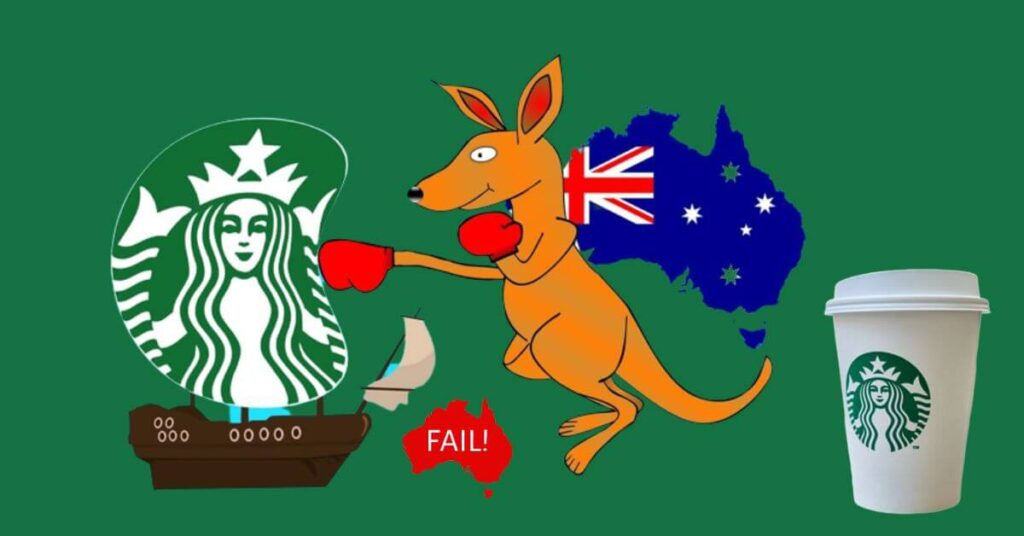5 Reasons Why Starbucks Failed in Australia – Starbucks is a coffee company founded in 1971 as a cafe. Now, Starbucks is known as the largest coffee shop chain company in the world with more than 35 thousand branches spread across more than 80 countries around the world. However, Starbucks outlets have failed to enter the Australian market, why is that? Let’s review in more detail.
Starbucks outlets have mushroomed in Indonesia, but not in Australia. Starbucks entered the Australian market in 2000. By 2008, Australia had more than 80 branches. But, in the same year, Australia closed 70% of its total branches in Australia as a result of the financial crisis that occurred in 2008.
Why can this happen? And why did Starbucks fail in Australia?
Why Starbucks Failed in Australia
Even though Australia has a different culture and perspective on coffee, still, its citizens are not very interested in Starbucks. Starbucks is growing too fast even though its popularity in a country known as ” down under ” is very minimal exposure.
In its first 7 years of operation, Starbucks experienced a cumulative loss of more than $100 million USD or equivalent to Rp. 1.5 trillion. They are too focused on increasing the number of outlets compared to adjusting to the tastes of the Australian market.
Therefore, we will discuss this is the reason for the failure of Starbucks in Australia.
1. Fierce competition
Starbucks competitors are local companies such as Gloria Jean’s and The Coffee Club. The love of Australians for the taste of local coffee makes these competitors far superior. The reason is that Starbucks doesn’t value the perspective of Australians who in fact have different tastes and aesthetics when it comes to the world of coffee.
Moreover, this Starbucks does not want to adapt to market penetration in Australia. Starbucks only sells coffee in general that is brought from the United States to Australia without knowing the preferences of local residents there. As a result, Starbucks lost badly to its competitors.
2. Not respecting local culture
As the mintor said earlier, Starbucks standardizes all of its coffee drinks for all of its outlet locations in the world. This kind of thing doesn’t resonate well with local Australians. They have different coffee preferences than those served by Starbucks.
So, Starbucks products never respect local culture. Of course, all of this has a history. Australia is a continent where the majority of its citizens are immigrants from Greece and Italy in the early 1900s. They have a distinct coffee culture and are also inspired by the coffee culture of Great Britain (now England).
After living in Australia for a while, those who later became Australians had a unique preference for coffee. Well , Starbucks did not analyze Australian culture or culture, so in the end its coffee products failed to penetrate the Australian market.
3. High price
In fact, Starbucks has higher prices than its local Australian competitors. Things like this make it difficult for companies to attract people who are price sensitive. Moreover, related to the previous factors, of course the majority of people will prefer local coffee outlets with a taste that suits their taste buds.
4. Error in selecting the location
Surprisingly, if Starbucks wants to attract local Australian consumers, they certainly have to choose the right location. However, Starbucks actually implemented a non-strategic step where it opened branches only in tourist cities.
Locations like this do not attract the interest of local Australians because their exposure is very limited. So that it affects the branding and sales in Australia. Even so, Starbucks continues to open outlets in these tourist cities because they are now only focused on attracting tourists and students from countries outside Australia.
5. Limited marketing capabilities
Limited marketing capabilities coupled with the lack of enthusiasm of Australians for the Starbucks brand is one of the reasons for the failure of this well-known coffee shop in Australia. Their efforts to get regular Australian consumers and customers have not had a significant impact.

